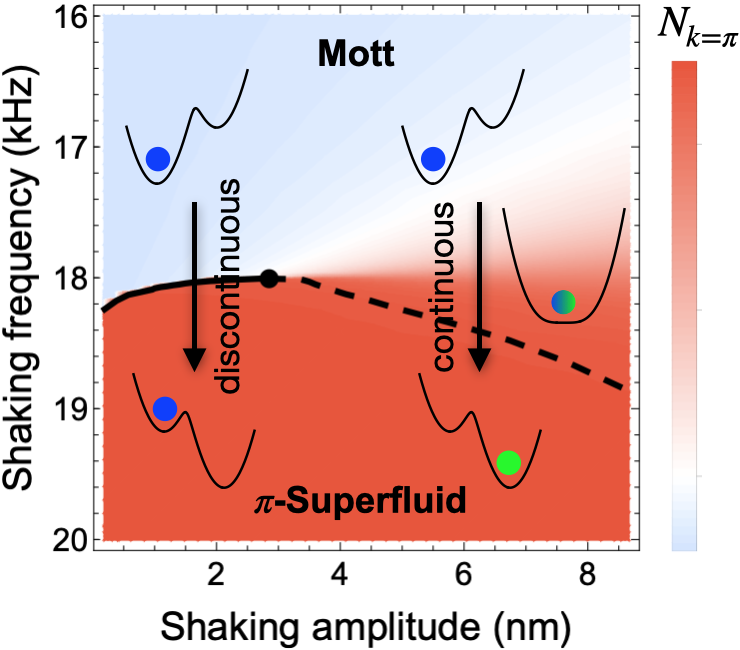Research Highlights
Towards table-top quantum simulation of vacuum decay
A team of experimentalists and theorists from Cavendish has tuned the nature of a quantum phase transition by shaking atoms in an optical lattice, which paves the way towards table-top simulations of cosmological structure formation by false vacuum decay.

In the continuous regime the system crosses over to the final ground state, whereas in the discontinuous regime it can remain stuck in the original energy minimum which is no longer the ground state (false vacuum).
Quantum phase transitions occur at temperatures close to absolute zero and are driven by quantum rather than thermal fluctuations. Laboratory studies probing their dynamics have so far focused on cases where the transition is continuous, i.e., the system undergoes a smooth change from one phase to the other, such as ferromagnet to paramagnet. However, many phase transitions, including the one thought to have triggered the inflation period in the early universe, are discontinuous. They are characterised by a metastability where a system can remain stuck in the original phase even though the ground state has changed. How this “false vacuum” eventually decays by quantum fluctuations is an open problem.
By resonantly shaking the position of a lattice, the researchers were able to hybridise the lowest two energy bands, yielding a novel phase transition between a Mott insulator and a staggered superfluid. Crucially, for weak shaking, this transition is discontinuous because the two phases have incompatible orders, whereas for strong shaking, it becomes continuous. By sweeping across the transition, the experimentalists could observe variable metastability and hysteresis in the discontinuous regime, in good agreement with numerical predictions.
This work establishes a versatile experimental setup for exploring the role of quantum fluctuations and the mechanism of defect formation in discontinuous quantum phase transitions, taking us one step closer to potential simulations of the early universe.
Bo Song, Shovan Dutta, Shaurya Bhave, Jr-Chiun Yu, Edward Carter, Nigel Cooper, Ulrich Schneider, Nat. Phys. 18 259 (2022).
Adapted from a Cavendish press release. Also see Physics World and Nature Physics News & Views.